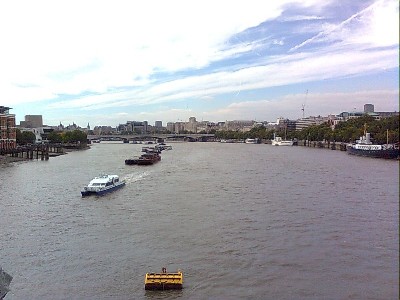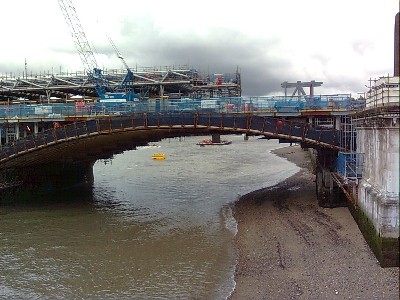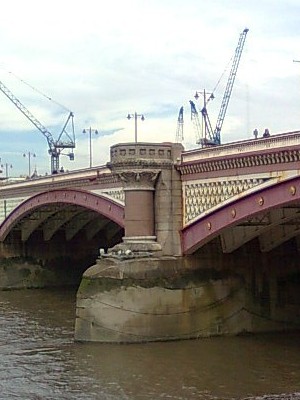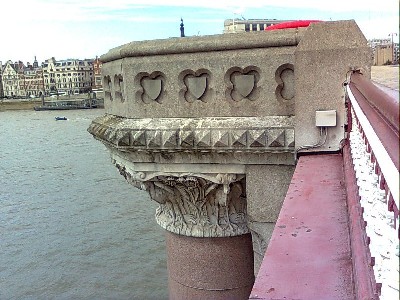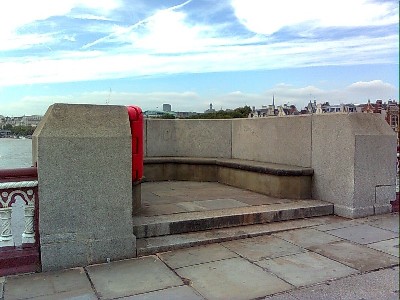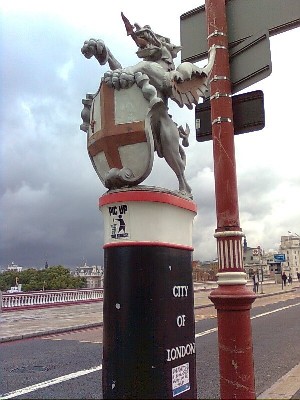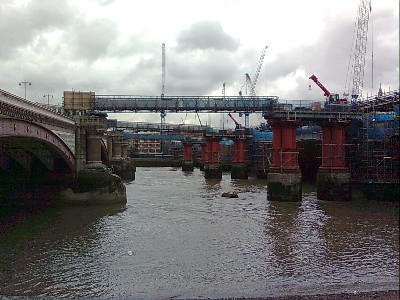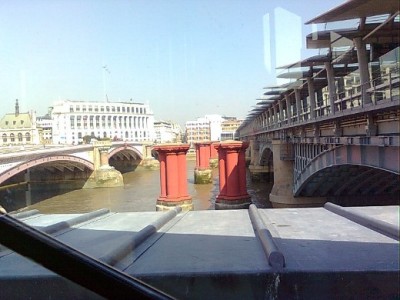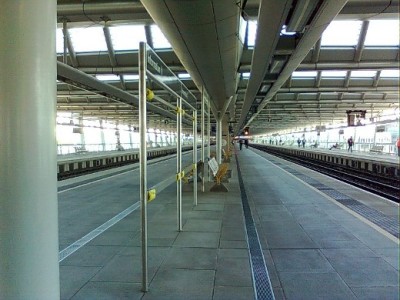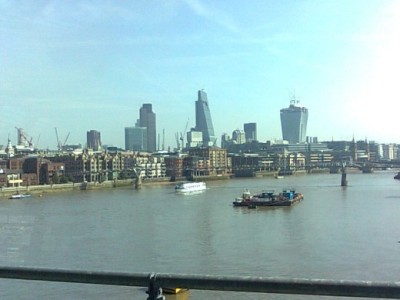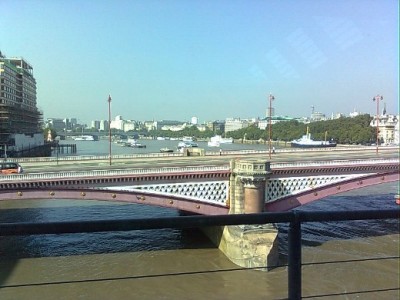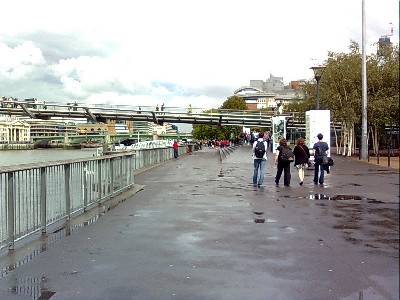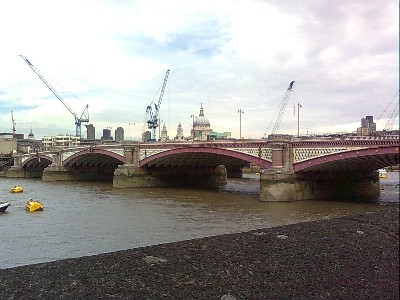
The first Blackfriars Bridge was opened to pedestrians in 1766 and completed and fully opened in 1769. The bridge was built of Portland stone and consisted of nine elliptical arches, the piers being decorated with pairs of Ionic columns above which were elegant refuges for pedestrians. It was to have been called Pitt Bridge after the Prime Minister of the day but by the time it was opened he had fallen out of favour and so it was named after the monastery that used to occupy a site on the northern approach road to the bridge. Over the years repairs were made to the piers and columns but in 1850 when one of the piers began to sink and attempted repairs failed, it was decided that the bridge should be replaced. However, it wasn't until 15 years later in 1865 that work on the five span iron bridge with Venetian Gothic style decoration began. After many delays it was officially opened in 1869. The arches consist of wrought iron ribs, with open lattice spandrels at the outer edge. On the end of each pier is a column of polished red granite capped with carved capitals of Portland stone. The four carvings on the upstream side show plants and birds from the upper part of the Thames while the four on the downstream side are of birds and seaweed from the estuary. Resting on top of the columns are refuges at pavement level for pedestrians. At the four corners of the bridge, plinths were erected but no decision could be reached as to what to put on them and so they remained empty. Today the plinths on the south side can still be seen although they have been converted into staircases leading down to the riverbank. When the bridge was first opened it was painted green with some gold detailing. Today it is red and white. From 1907 to 1909 work took place to widen the bridge on the upstream side. This involved digging new foundations to lengthen the piers. The widened bridge measured 32 metres and was and still is the widest bridge in London. Blackfriars Railway Bridge was built in 1864 just a few feet away from Blackfriars Bridge on the downstream side. It was replaced in 1886 with a wider railway bridge built alongside although the piers of the old bridge were left in place. When most of these pictures were taken, building work was in progress to rebuild both the bridge and Blackfriars station on the north bank and to build a new station with platforms spanning the river. A few pictures were taken later showing the completed bridge which is the first station to span the Thames, with a roof over the entire platform length, and entrances on both the north and south sides of the river. |
